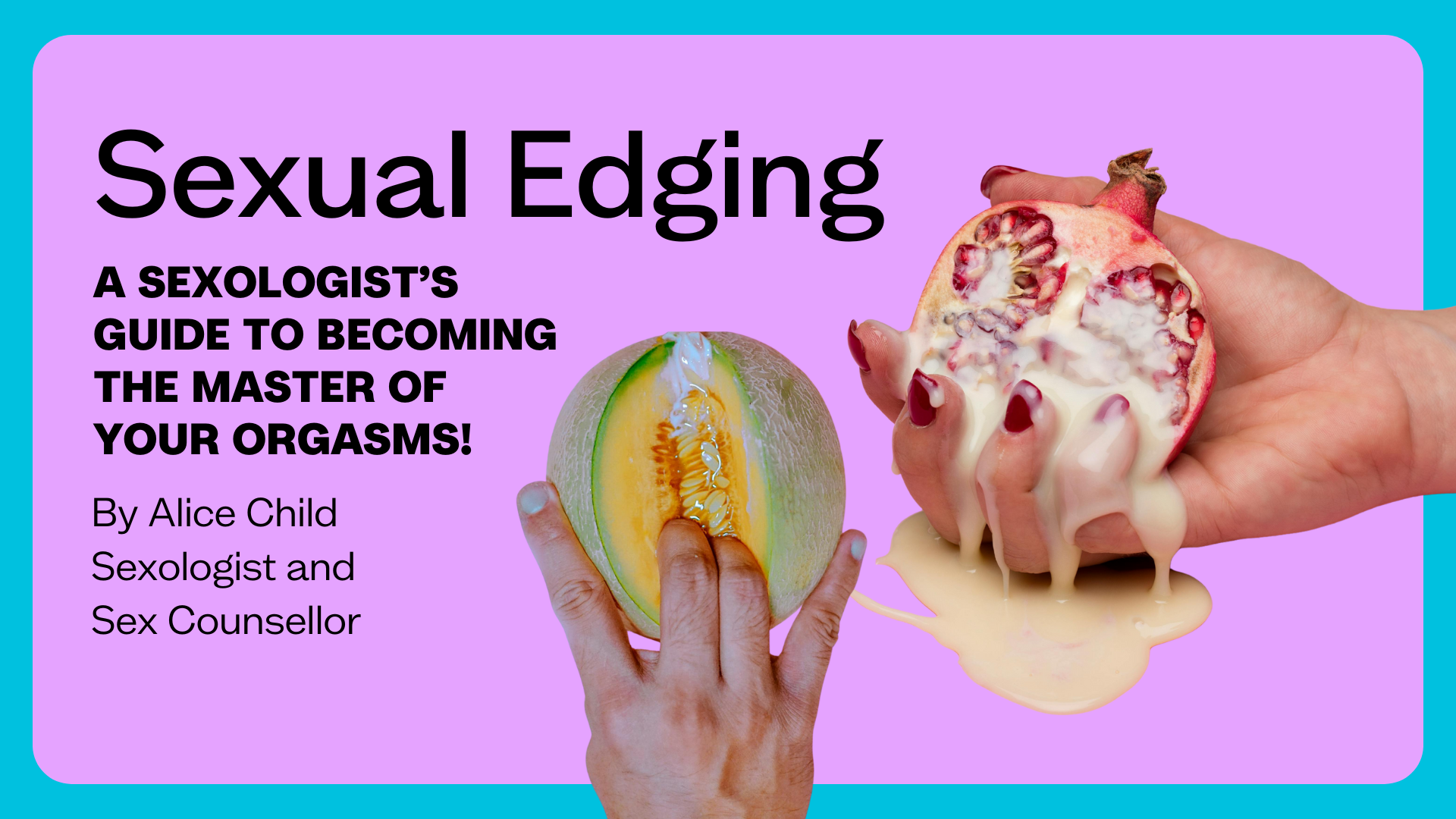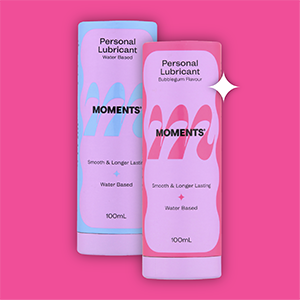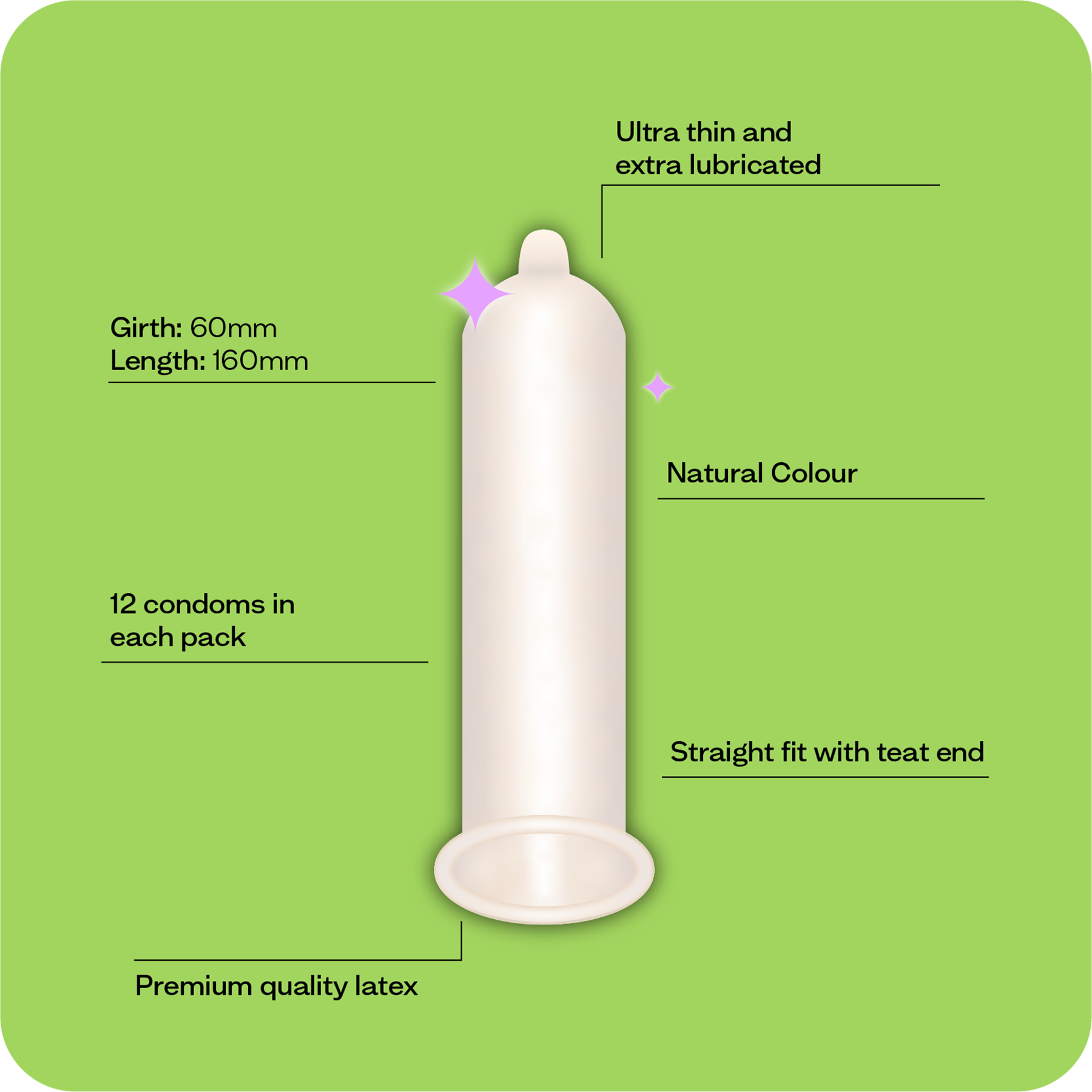

Sexual Edging
A Sexologist’s Guide to Becoming the Master of Your Orgasms!
Sexologist Alice Child explains the practice and science behind sexual edging,
and why it can transform your sex life!
What is Edging?
Edging is essentially "revving the engine" of your arousal and orgasm. It involves building arousal up to the brink of orgasm and then purposefully pulling back.

This means deliberately stimulating yourself or your partner until you reach the threshold of climax, and then reducing that stimulation to bring the arousal level back down. This can be done once, twice, or multiple times before eventually allowing the orgasm to happen—or choosing not to orgasm at all.
Edging can be practiced solo during masturbation or explored with a partner for heightened pleasure and connection. It is a form of erotic self-mastery that helps you build more awareness of your arousal, unlock new sensations, and find more satisfying ways to connect with your body.
What's Happening in the Body During Edging?
When you edge, you're intensifying anticipation and increasing the amount of time your genitals are aroused, engorged, and lubricated. You're also staying present in your body and encouraging a greater release of pleasure-enhancing neurotransmitters and hormones like dopamine and oxytocin.
This buildup often results in fuller, more intense, and more full-bodied orgasms.
Edging also strengthens your mind-body connection, helping you to learn new pleasure pathways. The brain's ability to form new neural networks—called neuroplasticity—means that with time and practice, you can literally rewire how your body responds to arousal and orgasm. This is key for anyone looking to overcome sexual challenges, enhance their pleasure, or discover more nuanced erotic experiences.
Can Edging Lead to Stronger Orgasms?
Absolutely. Edging often makes orgasms feel more intense, satisfying, and longer-lasting. With practice, edging also teaches you how to feel in control of your pleasure and arousal rather than being at the mercy of it.
It can also help deepen the emotional and physical experience of orgasm, making it feel more full-bodied and all-encompassing. Rather than ‘quick release’ orgasms that can feel unsatisfying, fleeting, and that stay ‘locked’ in the genitals and pelvis, it’s common for orgasms after edging to feel like waves of pleasure that ripple through your whole body.
For people who feel their orgasms are too quick or underwhelming, edging offers a powerful way to enrich the experience.

What Are the Other Benefits of Edging?
Beyond pleasure, edging helps you:
• Become more attuned to your body's arousal patterns
• Learn more deeply what you like when it comes to pleasure
• Gain awareness of how to increase or decrease arousal
• Address issues such as premature ejaculation, erection difficulties, difficulty orgasming and delayed ejaculation
• Combat performance anxiety
• Help reduce over-reliance on porn
• Practice mindfulness and stay present during sexual activity
• Strengthen your pelvic floor and muscle control
• Explore new ways of experiencing pleasure
Edging is therefore a key technique I recommend to clients looking to deepen their self-pleasure practices and feel more connected to their bodies, and it can be practiced in many different ways.
How to Increase Arousal
Before trying edging, spend time intentionally building arousal. Here are some tips:
• Create a relaxing, sensual space: use music, candles, lube, and toys.
• Engage your imagination: fantasize, read erotica, or watch ethical porn.
• Explore your pleasure anatomy and new erogenous zones.
• Use plenty of lube and try different types of touch.
• Take your time: let arousal build gradually.
• Play with speed, rhythm, and pressure.
• Use breath: fast "fire breathing" can ramp things up.
• Squeeze and release your pelvic floor muscles (Kegels).
• Move your body—especially your pelvis.
• Make noise: vocalizing can increase pleasure.
• Let go of orgasm as the goal. Instead, focus on experiencing pleasure.
Learning what turns you on, and how to ride that wave, is essential to successful edging.

How to Lower Arousal
Once you reach your edge, you need techniques to come down from it. Practice these alone to find what works best:
• Remove stimulation entirely.
• Practice deep, slow breathing (e.g., square breathing).
• Reduce stimulation intensity: slow down, reduce pressure, turn down toy settings, or add more lube.
• Redirect touch to non-genital areas.
• Exhale with sound: sighs and humming help release tension.
• Move your body: shake it out to release built-up energy.
• Change positions to alter sensations.
• Relax your pelvic floor muscles.
• Visualize sexual energy flowing from your genitals to other parts of your body.
Edging requires learning both how to accelerate and decelerate your arousal, so take your time learning your own erotic body and mind.
What If I Can’t Get to My Edge?
That’s completely okay. You can still benefit from edging by practicing mindful arousal without necessarily reaching climax.
Difficulty building arousal or reaching orgasm can stem from:
• Performance anxiety
• Mental blocks, or ‘getting in your head’
• Focusing too much on orgasm as the goal
• Lack of education about anatomy and pleasure
• Insufficient genital or clitorial stimulation (especially clitoral for vulva owners)
• Moving too fast and not giving yourself enough time
• Unhelpful ‘quick release’ masturbation habits
• Over reliance on porn
• Discomfort or pain during pleasure
Difficulty reaching orgasm or delayed orgasms are a common concern for both women and vulva owners and men and penis owners during partnered sex.
Helping clients learn how to experience more pleasure and reach orgasm is a key part of my work. If this is something you're struggling with, I recommend booking a session for personalized support.
What If I Orgasm Too Quickly?

That’s also normal. Many people find their orgasm sneaks up on them, especially if they're used to quick, goal-oriented masturbation.
Premature ejaculation or loss of control near orgasm is a very common experience and it’s often rooted in habit. Over time, your body forms specific neural patterns based on past experiences. If your body is used to going from zero to orgasm quickly, that’s the default pattern it will follow.
Mindful masturbation and edging help disrupt those patterns and create new ones. I recommend starting slow:
• Build arousal up to a 6/10 intensity (not a 9!), then reduce it to a 4.
• Gradually increase how close to the edge you can go while staying in control.
This is how you build control and expand your pleasure capacity over time. Be patient with your body. With consistency, your mindfulness and feeling of control will improve.
It takes time and practice to feel more mind-body connection and to form these new pleasure pathways!
Can I Try Edging With a Partner?
Yes! Edging with a partner can be incredibly hot, and it can be a great way to learn more about yourself and each other. It’s especially arousing for people who enjoy teasing, anticipation, and power play.
Here are some ideas:
• Use remote-controlled toys and let your partner be in charge of the toy and how your arousal builds
• Try mutual edging sessions, taking turns on each other
• Try edging as part of mutual masturbation
• Explore orgasm teasing or denial as a kink.
• Incorporate it into BDSM scenes or roleplay.
Edging together builds intimacy, communication, and a deeper understanding of each other’s pleasure. Create a judgement-free environment for learning, discovery and trying new things together.
How to Try Edging At home (alone or with a partner!)
1. Set the Scene
Make your environment sensual. Gather anything you associate with pleasure that will help you feel present and increase your arousal: lube, toys, erotica, music, mood lighting.
2. Talk About It (if partnered)
Discuss boundaries and desires ahead of time. Cover:
• Who will be edged (or both)
• What type of stimulation works best to increase your arousal
• What might you need to come off the edge?
• Whether the session will be playful or a more intense, power exchange dynamic
• How many edges you'd like to try (perhaps just start with one or two!)
Choose a clear signal (like saying "edge!") to indicate when you’re at your edge.
3. Start Slow and Build Arousal
Use touch and stimulation to gradually build arousal. Focus on sensation, not performance. Take your time and let your arousal build. Use the techniques above to build arousal in your own way and time.
4. Stay present and read body language
Stay in the moment, and stay curious. Read each others’ body language, and see if you can tell when they are getting close to orgasm. You might notice:
• Tightening of the testicals towards the body
• Increased/faster breathing
• Increased heart rate
• Making noises
• Becoming flushed or hot
• Muscle spasms and faster movements
5. Communicate!
If you’re not sure - ask! You’re not a mind reader! Stay connected and communicate.
6. Try Edging using These Challenge Levels
• Beginner: Edge at a 6/10 arousal. Reduce or remove genital stimulation and use deep
breathing to bring yourself down. After a minute or so, resume stimulation.
• Intermediate: Edge at a 7–8/10. Use deep breathing and significantly lighten and slow
down the stimulation. Build back up when you feel ready to go again.
• Advanced: Edge at a 9/10. Bring yourself down using deep breathing and visualization
alone.
Repeat as many times as you like, or decide not to orgasm at all. It's about playing with energy, not racing to the finish!
If you are doing this with a partner, it can be incredibly connective to look into each other's eyes as you watch them come off their edge.
Final Thoughts
There is no one “correct” way to orgasm. Your body is unique, and so is your path to pleasure. By learning more about your erogenous zones, experimenting with new techniques, and approaching sex with curiosity rather than pressure, you can unlock deeper and more diverse orgasmic experiences.
And remember—pleasure isn’t just about climax. Every step on the journey is worthy of
attention and enjoyment.
If you’re curious to explore your orgasmic potential or have questions about your pleasure, consider booking a session with me. Together, we can uncover your mind and body unique blueprint, and help you unlock your pleasure potential!
Alice Child
Sexologist and Sex Counsellor
Featured Product
Popular Posts
- Choosing a selection results in a full page refresh.
- Press the space key then arrow keys to make a selection.













